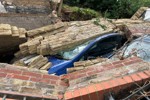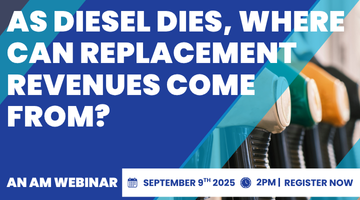That was actually a minority aim – there was already separate European legislation bringing about an outright ban on all forms of asbestos in manufacturing, enforced from 1999 (see panel below). For the record, that law came from the 98/12 Consolidated EC Vehicle Braking Directive: prohibition of asbestos in brake friction materials.
R90’s extended picture was to set a minimum standard of aftermarket quality and put an official block on shoddy and unsafe products.
This was an issue on which OE and aftermarket manufacturers, trade bodies (in particular the Automotive Distribution Federation) and European legislators worked together for years. With effect from March 31, 2001, if the tamper-proof box says it’s R90, then the factor, the technician and the customer can rest assured that the product in it conforms to set quality and safety standards.
Of course, like any outright ban or any strictly enforced regulation, there are exceptions, let-out clauses and extenuations – among them the fact that the R90 directives apply to passenger cars and light commercials up to 3.5 tonnes registered after April 1, 2001. It does not apply at all to cars registered before that, nor to the hundreds of thousands of heavy goods and public service vehicles also having to slam on the brakes to avoid a pile-up on Britain’s congested roads.
But hats off to the ADF et al for at least getting something done to level the playing field and ease the pressure of very cheap, low quality brands.
It also provides a great marketing hook for suppliers: “Our product is R90 approved.”
And that’s created caused a bit of friction at big player level.
An OE manufacturer like the Federal-Mogul brand Ferodo says that, while its premium aftermarket ranges are R90 compliant, they are designed to OE standards and, therefore, exceed R90 specifications by a country mile.
The chart below readily illustrates Ferodo’s point.
Jonathan Allen, Federal-Mogul Aftermarket UK’s marketing commercial manager, says: “R90 sets very minimum standards, yet it is used by so many as an endorsement of their product.” We asked him whether he thought the regulation should be toughened further to go beyond the basic – but still costly – tests and ‘E’-mark secure packaging requirements.
“I’m not sure there’s any point unless the regulation is going to be policed properly,” says Allen.
“There was a huge furore when all this first came up – people were talking about the dire consequences of not using regulated products. But I don’t get the feeling the local authorities pursue any R90 infringement claim with any vigour.
Their equivalents may be doing so in places like Spain, but I don’t see any evidence of it here.”
AM invited the Trading Standards Institute to comment on local authorities’ effectiveness in following up R90 issues, but it declined the offer.
Andy Long, TRW Aftermarket marketing manager, also questions the effectiveness of R90.
“Most of the decent brands met R90 standards long before they came in, so it’s not a differentiator at all,” he says.
“A lot of the lesser brands use R90 as a means to ‘pass Go and collect £200’. It’s not as much as some manufacturers would like it to be.”
Do you think Regulation 90 is worth the paper it’s printed on? Email your views to stephen.briers@emap.com.

The danger is still present
Asbestos is a naturally occurring mineral mined in several countries, among them Zimbabwe, Australia and Canada.
There are three main types: chrysotile, amosite and crocidolite, commonly known as white, brown and blue respectively.
The most dangerous from a health point of view, brown and blue, have not been imported into the UK for more than 20 years. The use of white asbestos for the manufacture of gaskets, brake pads and clutch linings, as well as asbestos cement building products, was banned in the UK and elsewhere in Europe from November 1999.
But that doesn’t mean it’s all gone. There’s not one regulation that states asbestos has to be removed from anything – buildings, cars, commercial vehicles or equipment – just because it is asbestos.
And it’s still being mined and used in the manufacture of products outside EC control. That means it can, therefore, get back into the automotive aftermarket chain through the cheap imports back door.
Exposure to asbestos fibres through working on non-R90 brakes or clutch linings can lead to a number of diseases, including lung cancer and mesothelioma.
TSO unable to police regulations
The Automotive Distribution Federation, which played a key role in the creation of EC R90, says it has seen no evidence of the regulation being policed.
ADF chief executive Brian Spratt says: “The appropriate inspectors are local trading standards officers, and only a small proportion of them would have real knowledge of the regulations. Given the wide scope of TSOs’ responsibilities, it really is a needle in a haystack for them to find someone stocking, selling or using ‘suspect’ braking products. The only way TSOs are likely to take action is if someone whistle-blows. For that you need to have the evidence.
“We did think we had some suitable examples of suspect brake pads supplied through one volume manufacturer’s trade club but, by the time we’d had them tested, they’d got wind of what we were up to and withdrew the suspect ones. But we’re still looking.”
Spratt says that the ADF expects all the usual OES suppliers, and their aftermarket divisions, to be supplying compliant material – and most of it would be equal to, or exceed, the requirements.
“Don’t forget that R90 allows the product to be 15% below the original equipment standard. It also stops the supply of material that is 16%-plus better than the original equipment!
“The potential for problems comes with ‘white box’ stuff available from all sorts of different producers around the globe. Are they imported with the appropriate testing regime having been performed, or are they supplied with a bogus certificate of compliance, or is the testing station properly regulated? These are all questions to which I do not have an answer.”
Brake disc production in a minute
It takes TRW about 55 seconds to turn a piece of grey cast iron into an OE standard brake disc.
To make a tidy profit out of them, it needs to produce at least 400 discs at any one time for each part number.
Every minimum production runs takes just over six hours, after which a further 20 minutes is needed to change all the production line hardware and software to a new part number – and this includes all the necessary production start tests.
TRW has more than 850 reference customers for solid and vented brake discs, representing 96% of the European market.
Understandably, the company runs seven electronically controlled disc production machines more or less flat out – and there are plans for more, according to TRW’s marketing manager Andy Long.
“We’re incredibly proud of our in-house manufacturing skill and ability, and demand for our brake discs is high,” he says.
That demand is put into perspective by a milestone passed by the company’s Czech Republic centre. The 50,000sq m facility, which also remanufactures callipers and steering racks, has just celebrated the production of its six millionth brake disc.
Clutch-by-wire
First there was brake-by-wire – the electronic braking system developed to reduce the driver’s muscular effort. Now, hot on the heels of Volkswagen Group’s much lauded Direct Shift Gearbox (DSG) system, Valeo has introduced clutch-by-wire.
Take note, because it’s a bit of kit that is likely to be taken up by some of the major car manufacturers, which means you’ll need additional specialist training to service it in the not-too-distant future. And let’s hope that if you invest in both, clutch-by-wire gets off to a better start than brake-by-wire: Mercedes-Benz was one of the first to snap it up, but then dumped it for a more conventional, and more reliable, electronically assisted mechanical set-up for the new S-class.
In Valeo’s design, the clutch pedal is fitted with a position sensor that informs an electronic control unit of the driver’s actions. The ECU then directly controls an actuator to optimize clutch operation.
In some ways its spiritual ancestor (and DSG’s) is the pre-selector box on Armstrong-Siddeleys, since the gear can be shifted via a sensor on the base of the gearshift, enabling the driver to choose whether or not to use the clutch.
If the pedal is used, the unit reduces pedal travel and the force required to operate it, while providing greater feedback through an electrical ‘force-feel’ element. A normal cable or hydraulic clutch requires pedal effort of between 7kg and 12kg.
By correcting any driver errors, stalling and kangaroo hops are prevented and, says Valeo, clutch and transmission life prolonged.
But there is good news for technicians on the servicing side. Although clutch life is expected to be longer, maintenance is simplified because the ECU provides all the data you’ll need on what it’s been up to.
The Driving Standards Agency jury is out on whether clutch-by-wire will classify a car as being automatic or manual transmission.













Login to comment
Comments
No comments have been made yet.